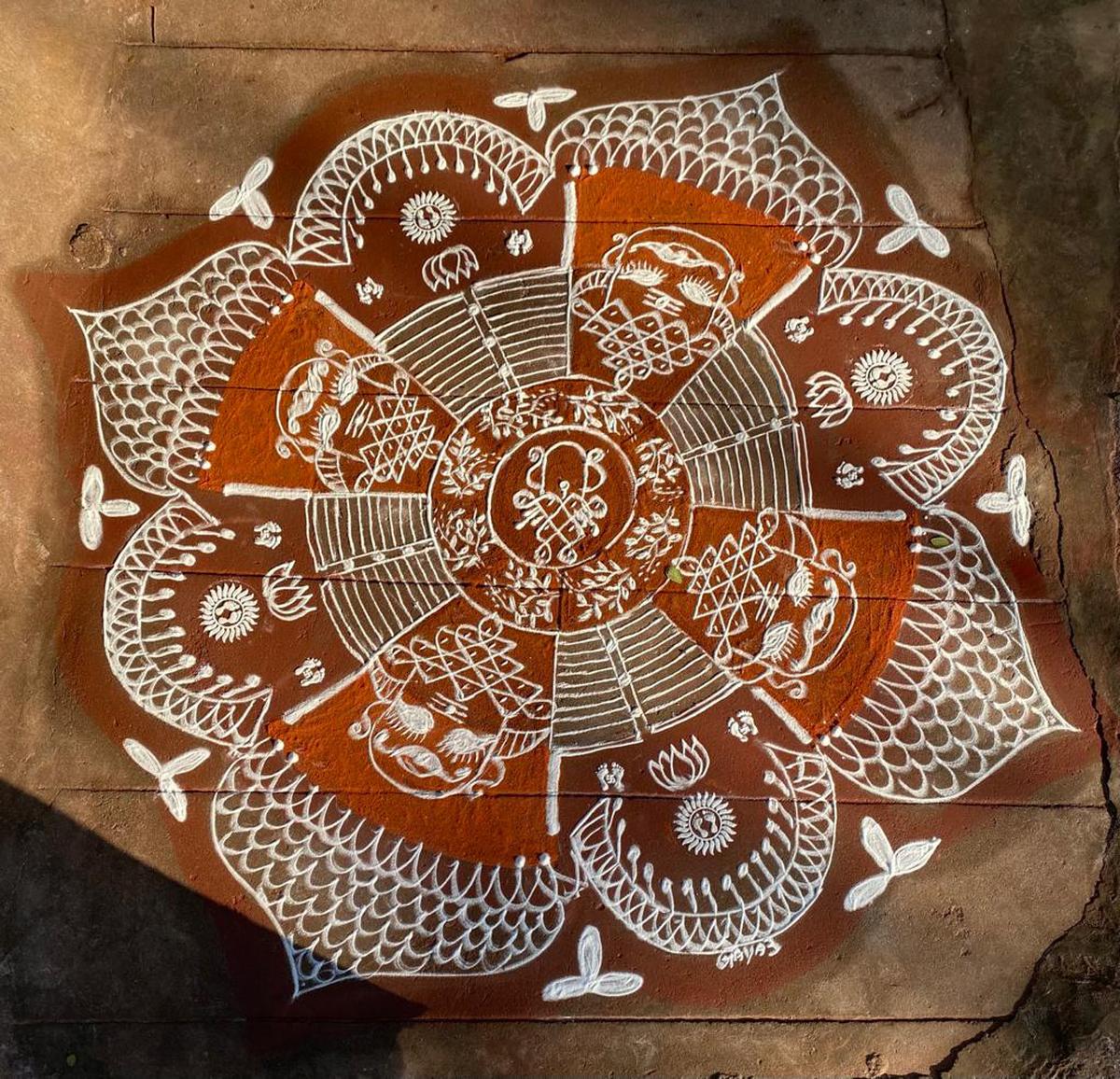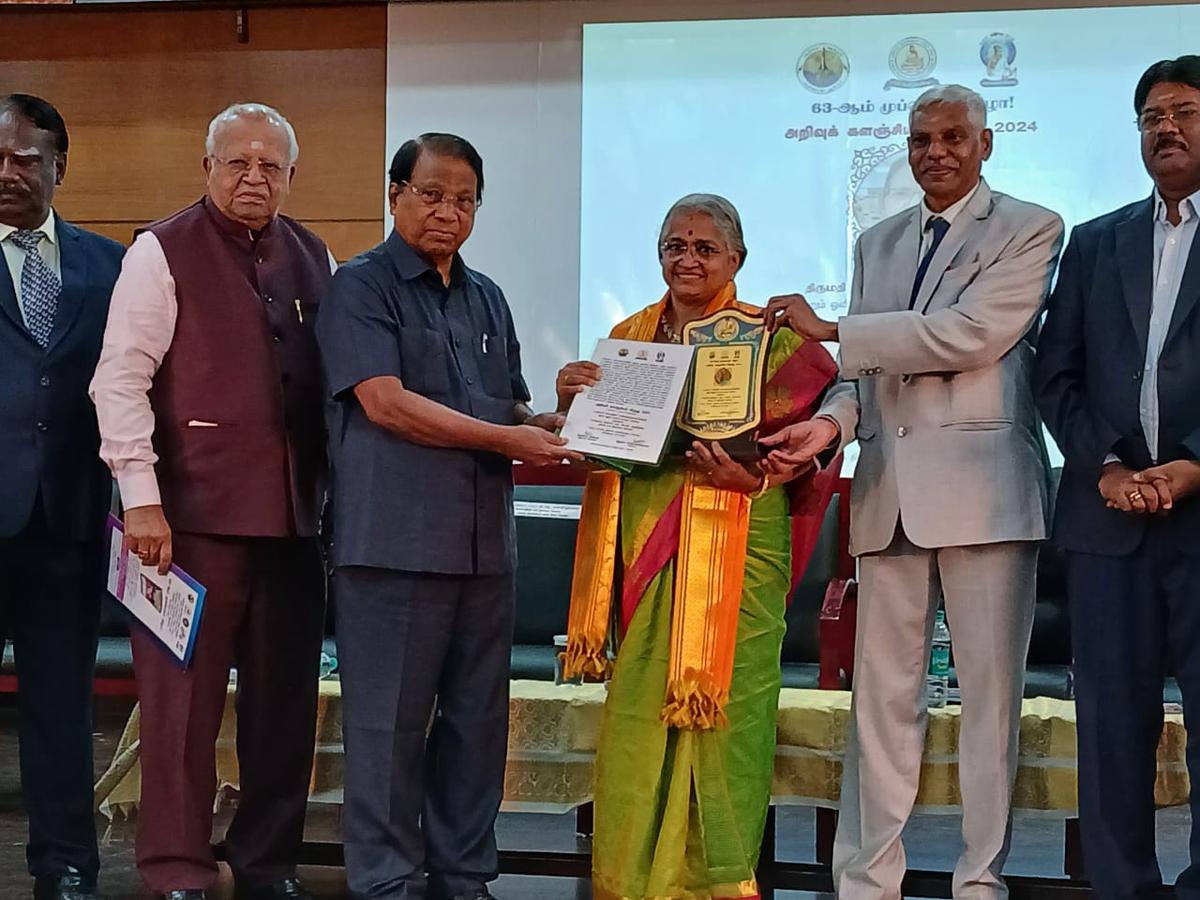
The entrance to Gayathri Shankarnarayan’s house on Fifth Cross Street in CIT Colony is incomplete without seeing an elaborate kolam design. Sometimes you see the 57-year-old humming melodious tunes while he makes the white lace drawings. This kolam artist with a Ph.D. in music is booming.
On November 8, she was honored with the Arivu Kalanjiyam Award by VIT Chancellor G. Vishwanathan and Supreme Court Justice AA Nakkiran, which she considers her most prestigious award. On November 10, she received the Kalaam Nambikkai Virudhu from food writer and TV chef Mallika Badrinath (the award is also known as Star Icon of India).
Kolam is like a life cycle for Gayathri. “When it is made, it symbolizes birth; it ripens as the day progresses and it dies when it is cleaned for the next design,” she says.

A margazhi kolam
The fascination with these lace designs using rice flour started when she was still at school. She took longer routes to school, stopping to admire the kolams outside every house in her neighborhood in Sengottai.
“I developed my love for kolam by watching my mother make those intricate designs,” she says. “I went to a government school, where I had eight subjects and each notebook was half filled with kolam drawings. My teachers would scold me, but I still feel nostalgic when I think back to that time. My mother tells me that when I was five, I used to draw kolams on our veranda.”

Her fondest childhood memories are of Margazhi, when the neighbors eagerly planned the kolams that would decorate each house the next day.
Later, during her studies, she trained to teach kolam to children with autism. “At the time, I knew little about psychology, but the training made me realize how kolam could serve as therapy for children with special needs,” says Gayathri, who has worked with the Lotus Foundation to teach children on the spectrum.
Kolam is essentially about connecting the dots, and it aids in therapy by encouraging calmness and creativity in creating patterns, she explains. Ramdev from Bharatiya Rangavali guided her through this training.
Marriage brought her to the city and she obtained a BA degree in music, integrated with kolam. “I completed all three degrees through correspondence while managing my responsibilities as a homemaker and caring for my two children and my in-laws. My study time would be from 8:00 PM to 2:00 AM during which I would practice my songs and kolam patterns. It was a huge challenge, but I had the full support of my family, especially my husband,” she says.

Receiving the Arivu Kalanjiyam Award from the dignitaries
Musicologists SAK Durga encouraged her to pursue her PhD, which she completed in 2012.
In 2008, she began teaching Carnatic music lessons via Skype, with many of her students coming from the United Kingdom, the United States and Japan. She also gives offline classes.
Her teachings are divided into three parts: the first focuses on the basics of Sa Ri Ga Ma, the second on minor bhajans, and the third on Sanskrit slokas and bhajans. She teaches Vishnu Sahasranama and Sanskrit for her international students. After completing these sessions, students receive a special gift: a kolam session, which introduces them to basic kolam patterns.
In 2017, she applied for a Junior Fellowship award from the Ministry of Culture to study folk music in Carnatic music. Besides this, she also completed her foundation in Kolam.
In 2020, her work was featured on the invitation to the U.S. Consulate’s Thanksgiving Event, a recognition she considers a prestigious milestone.
She has also visited international institutions such as SPIC MACAY, a university in Berkeley and Japan to teach kolam. She now has a group of students from Japan who regularly visit her home to learn kolam. Some of her famous works are the Chess Kolam, Lunar Kolam, Chandrayaan 3 Kolam and Cast Your Vote Kolam. With the Margazhi season approaching, she is preparing to make kolam designs for each verse from the Thiruppavai. “I prefer to use rice flour instead of food coloring because it serves as food for small insects. Bowing to make a kolam is a way of showing respect to Mother Earth,” she adds.
Gayathri can be reached at 98401 18711.
Published – Nov 16, 2024 10:20 PM IST